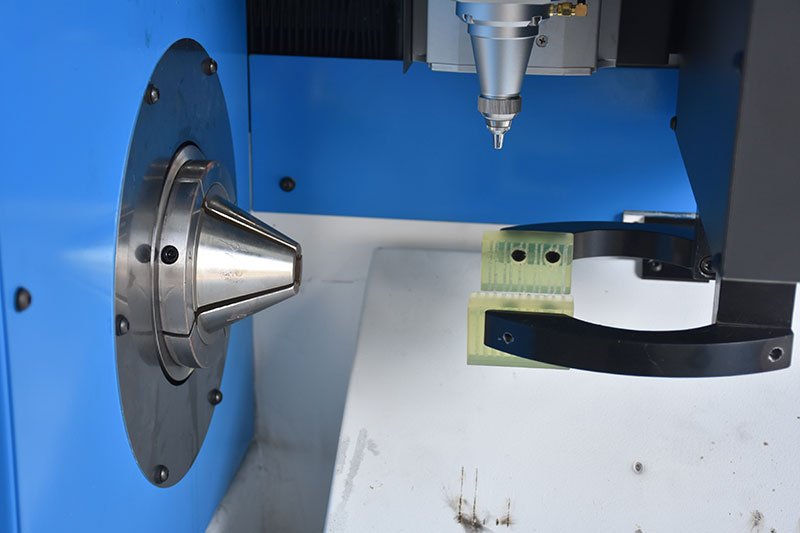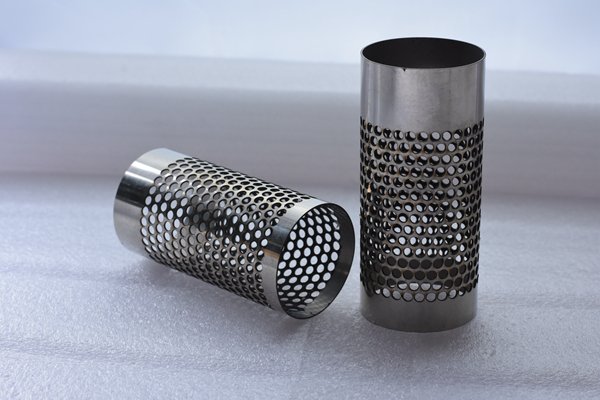Table of Contents
ToggleLaser Drilling
Optimized & Industry-ready Solutions
For All Your Complicated Needs
Laser Drilling:
Laser drilling has become a widely used manufacturing solution because it is a high speed, high quality, non-contact process that doesn’t suffer from effects due to mechanical wear of the drilling tool. The ability to change hole shape, size, and approach angle, and the ability for lasers to drill small diameters not possible with conventional drilling technology, add to the flexibility of the laser drilling system.
Benefits of fiber laser drilling include:
1. Creation of precisely-dimensioned, exactly placed holes
2. Holes can be any shape and size, and switching between hole types is immediate with no tool change
3. Any approach angle, down to ~15 degrees, with no change in process
4. No drill tips to wear – constant quality and no tool changing downtime
5. High-speed process – many applications less than 1 second/hole

Laser Drilling FAQ
Laser drilling is a process that uses a high-powered laser beam to create precise holes or cavities in a material.
Laser drilling offers several advantages, including precision, accuracy, and speed. It can also be used on a wide range of materials, including metals, ceramics, and polymers.
There are several types of laser drilling, including percussion drilling, trepanning, and helical drilling
A laser can be used to drill a wide range of materials, including metals, ceramics, polymers, and composites.
The maximum thickness of material that can be drilled with a laser depends on the power of the laser and the type of material. Generally, thicker materials require more powerful lasers.
The minimum diameter of a hole that can be drilled with a laser depends on the power of the laser and the type of material. Generally, smaller holes require more powerful lasers.
The cost of laser drilling depends on several factors, including the type of material, the thickness of the material, the size and complexity of the holes, and the power of the laser.
The speed of laser drilling depends on several factors, including the power of the laser, the type of material, and the size and complexity of the holes. Generally, laser drilling is faster than traditional drilling methods.
Safety precautions for laser drilling include wearing protective eyewear, using proper ventilation, and following proper operating procedures for the laser equipment.
Pulsed lasers emit short bursts of energy, while continuous wave lasers emit a continuous beam of energy. Pulsed lasers are often used for drilling because they can deliver high power in a short amount of time.
The laser beam’s wavelength plays a role in drilling because it determines which materials can be drilled and how easily the laser can penetrate the material.
The laser beam’s focus plays a role in drilling because it determines the size and shape of the hole that is created.
Fiber Laser Features
Why are more manufacturers switching to laser drilling?
Repeatability, accuracy, flexibility, and cost benefits are the primary reasons that laser drilling is rapidly increasing in popularity as a machining technique.
Mechanical Punching VS Fiber Laser Drilling
For flat metal parts, punching has the advantage that many holes, even different sizes, can be created in a single operation, making it good for multiple holed parts in high-volume production
Lasers eliminate the need and cost of making punch press tooling, providing a low-cost solution for prototyping or short-run parts. Laser drilling has no parts to wear or break, and can process the highest strength materials with no difficulty. Unlike mechanical punching with a diameter restriction of ~ 1.0 – 1.5x sheet thickness, lasers have immense flexibility in any hole-forming operation.
Chemical Etching VS Fiber Laser Drilling
Having the highest resolution and potential to process many holes simultaneously, chemical etching has advantages in applications that demand those characteristics.
Laser drilling is the highest-resolution alternative. Laser drilling does not require costly masking processes to protect areas not being etched, and can be significantly faster in applications that do not have thousands of holes in a single part.
Mechanical Machining VS Fiber Laser Drilling
Drilling, reaming and milling produce most holes in metal today. The technology is well established and easily understood, but has several limitations, mostly related to holes that have a high angle of incidence, or are non-circular.
Lasers have no restrictions on hole type and are able to achieve diameters down to a few microns. Approach angles down to 15 degrees are routine operations. Fiber lasers have no parts to wear, so hole quality is always the same, and with no tool changes needed, cycle times are generally reduced.
EDM VS Fiber Laser Drilling
EDM produces very high-quality holes with diameter/depth ratios of up to 200 or more in materials up to 300 mm thick. It can be combined with a wire-cutting function for cutting complex shapes. Like wire EDM cutting, the principal drawback is process speed.
Laser drilling is faster, and works on a broader range of materials.

